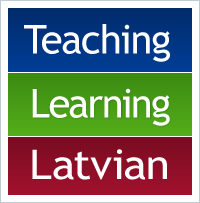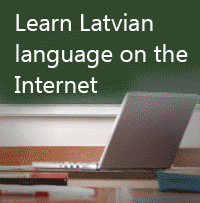The enlightening teaching aid “Livs in 44 answers”
Latvian Language Agency and Livonian Culture Centre has published exciting and comprehensible teaching aid “Livs in 44 answers” for students, teachers, lecturers and the others about indigenous inhabitants of Latvia – Livs. This teaching aid will be interesting and useful for all who would like to know basic facts and to start the exciting investigation about Livs, their history, culture, literature, art and language.
It is possible to purchase the teaching aid “Livs in 44 answers” in Latvian Language Agency (LVL 1.21).
For the rousing your interest about Livs we have a great pleasure to offer some answers about Livs available in the teaching aid.
Who are Livs?
Livs are a Baltic Finn nation that has lived for ages in the present territory of Latvia. Livs are the indigenous people of Latvia, who little by little, have mixed with Latvians.
Where have Livs lived?
According to the dates from archaeological excavations, chronicles and documents during 10th –13th century Livs inhabited wide territories of the present Latvia – the area of Kurzeme to the North from Abava river, the Vidzeme coastline and inland, lower of Gauja river, as well as the lower part of Daugava river. For the longest time Livs stayed in Northern Kurzeme – along the coastline of the Baltic sea in an approximately 60 km long and 2–5 km wide belt between Ovīši and Ģipka, where there were 12 Liv villages. In the middle of the 19th century Livs could also be met in Northern Vidzeme around Svētciems.
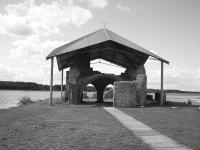
Which dwelling locations are historically connected with Livs?
Most of such places in Latvia are in Kurzeme and Vidzeme. The most important inhabited place is Riga, where Liv settlements already existed at the time it was founded. The following cities and settlements can be connected with Livs – Ainaži, Aizkraukle, Cēsis, Ikšķile, Kandava, Limbaži, Mazsalaca, Salacgrīva, Salaspils, Talsi, Turaida, Ventspils etc.
What is the Liv coast?
Traditionally the name “Liv coast” is used for the territory which is located in Northern Kurzeme along the Baltic Sea coastline from Ovīši on the Baltic coast to Ģipka on the side of the Gulf of Riga. It includes the fishermen’s villages inhabited during the first half of the 20th century.
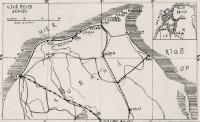
Are there still people in the world who speak the Liv language?
Yes. Scientists think that in the year 2010, there could be around 40 people who could communicate in Liv language in the world including Latvia, but the amount of those who have obtained the basics of the Liv language is around two hundred. The biggest part of them are the researchers of the Liv language and those who are interested in it. In the year 2011, only one person was known (Grizelda Kristiņa who resides in Canada), whose mother tongue would be the Liv language.
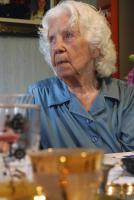
What is the Liv alphabet?
The basis of the Liv written language is the Latin alphabet with additional characters above the letters (ä, ȯ, õ, š, ž) and under the letters (ḑ, ļ, ņ, ŗ, ţ). However, there are a lot more of these letters. The length of a vowel is marked by a macron above the letter: Āā, Ǟǟ, Ēē, Īī, Ōō, Ȱȱ, Ȭȭ, Ūū.
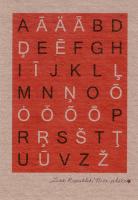
Can Livs still be met today and how many of them are in the world?
According to the most recent census (2011), only 250 Latvian citizens have registered their nationality as Livs, but there are a many more Livs and their descendants in Latvia and around the world because the majority of the Livs consider themselves as belonging to two nations – Latvians and Livs.
Which nationalities are related to Livs?
Liv-related nations are all the Baltic Finn nations: Finns, Estonians, Karelians, Izhorians, Votes, Veps and Sami people. Related nations are also Volga Finns – Mordvians and Marians, as well Ugrians – Hanti, Mansi and Hungarian people – and Permians – Komi and Udmurtians –, and Samoyedians.
Have Livs written an ABC?
The Liv ABC was written 75 years ago and it was done by the Liv poet Kārlis Stalte. It was found only five years ago, the manuscript was in the archive in Estonia for all of that time. Illustrations are drawn by Latvian and Estonian pupils and it was planned to publish it in Estonia in 2011.
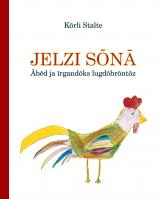
Are there Liv language dictionaries?
In 1861 the collaboration work of A. J. Sjögren ja F. J. Wiedemann was published in German – the first Liv language grammar book and dictionary, which also included the first samples of Liv folklore, poetry and religious texts. The most extensive currently published Liv language dictionary was published in 1938 by Lauri Kettunen.
The only Liv-Latvian dictionary was issued in 1999. It is compiled by Valts Ernštreits and issued by the Livonian Culture Centre. A few phrasebooks have been issued: in 1991 “Latvian–Liv phrasebook” by Valda Šuvcāne and Elfrīda Žagare and in 1999 – “Liv–English–Latvian phrasebook” by Valda Šuvcāne and Ieva Ernštreite. It is planned that in 2012 a very large Liv-Estonian-Latvian dictionary (compiled by Tiit-Rein Viitso) will be published.
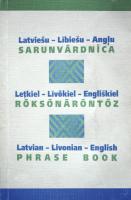
What was the lifestyle of ancient Livs like?
Livs were doing the same things that Latvians who lived in a similar environment have done. The most important sector of economy for the Kurzeme coastline Livs was fishing, which was mostly done by men. Livs were fishing sprats, fluke, cod, Baltic herring, eels and other fish. Women took care of processing the fish, net darning, taking care of domestic animals and farming works. The main agricultural products were potatoes and crops. Additional sources of income were forestry, tar-works, berry and cone picking.
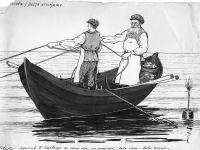
Where can I see how Livs have lived?
Liv lifestyle can mainly be seen in museums. In the Turaida Museum Reserve you can see an exposition “Gauja Livs in the culture history of Latvia”, which gives an insight into Liv ancient history and culture. In the Latvian Open-Air Museum, in the Dēliņi homestead of Liv fisherman, peasant inn, which has been transported to the museum from Lūžņa village and in the Ventspils Open-Air museum you can have an insight into the life of Livs in the 19th century. Insight into the history of Vidzeme Liv families can be found in Pāle museum. There are departments and collections dedicated to Livs which can also be found in other museums in Latvia and other countries.
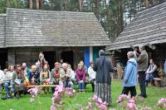
Where on the Internet information about Livs can be found?
The Liv language and culture portal livones.net provides information on Livs in Latvian, English and Liv languages.

